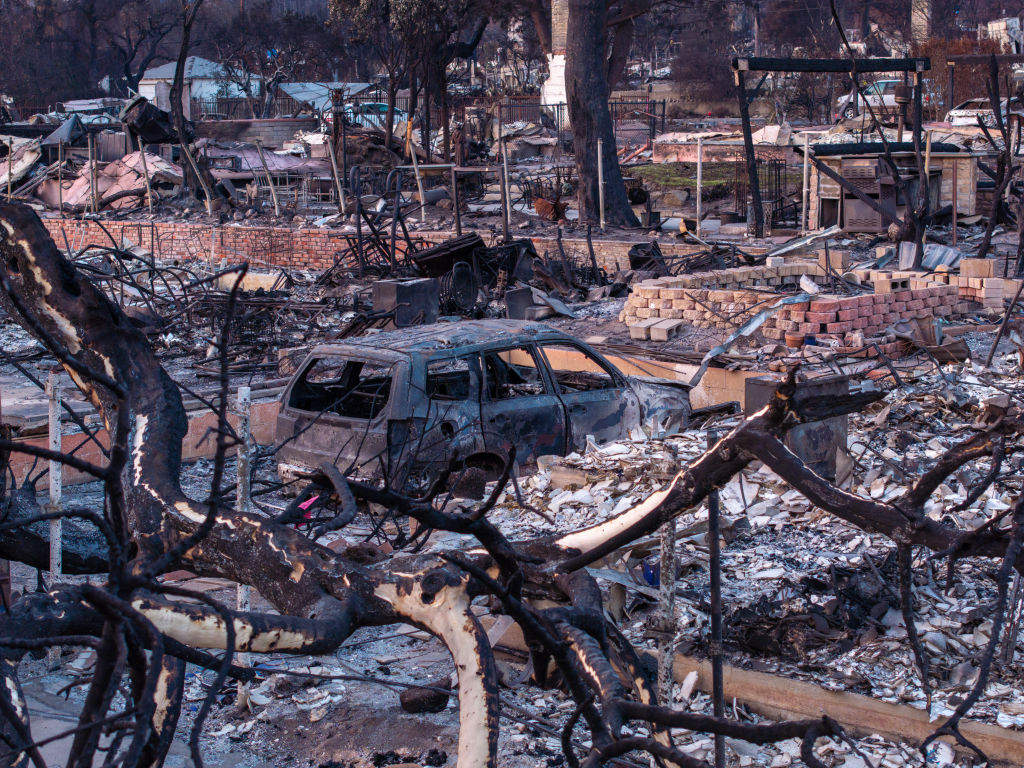Editorial Note: Opinions and thoughts are the author’s own and not those of AFROTECH™.
Over the past week, Los Angeles County has been battling wildfires that have devastated the city. Although some of the fires can be attributed to worsening climate conditions, some politicians blame artificial intelligence. While AI has proven to be a useful tool for wildfire prediction, the substantial amount of energy and water it amasses for its use raises concerns for a state already facing water scarcity.
Wildfires aren’t a rare occurrence in California. The state has always experienced either naturally occurring wildfires or arson-related ignitions. But over the past few years, worsening climate conditions have led to more frequent and increasingly destructive fires. As of the most recent occurrence, neighborhoods in Altadena, Malibu, and the coastal Pacific Palisades have sustained the most significant damage. Reports confirm that over 20,000 acres have been burned, and more than 120,000 structures damaged or destroyed. As the city discusses rebuilding, the projected damages could cost billions. Rebuilding the city will take a lot of effort and time, which has ignited another debate about whether Los Angeles should still host the 2028 Olympics.
The devastation triples when the amount of water required to keep the fires at bay is harder to acquire due to the West Coast experiencing severe droughts in the past year. Fire hydrants ran dry, and the lack of water led to firefighters using seawater to fight in a few areas.
AI has become a burgeoning industry that has infiltrated every sector of the economy and our way of life. The complexity of AI concerning the California Wildfires lies in its dual role: serving as a powerful tool in combating fires while posing the potential risk of inadvertently causing them.
In 2022, California Gov. Gavin Newsom announced new initiatives to use AI models to fight future wildfires. “We’re enlisting cutting-edge technology in our efforts to fight wildfires, exploring innovations like artificial intelligence can help us identify threats quicker and deploy resources smarter,” Newsome said in a statement.
AI models analyze video feeds to detect early fires. When they identify a fire, they alert a human team to respond and extinguish it before it spreads. AI has been used in several other projects to prevent wildfires from occurring or spreading. But while the program has had some success, the recent fire in the Palisades spread so quickly that it rendered the AI-powered cameras useless.
As Politico reports, politicians have blamed the AI industry. AI data centers are accelerating the depletion of water resources to cool down the growing number of data centers that power them. Each time someone engages with ChatGPT or uses AI tools, a surge of water is needed to reduce the heat generated by the AI equipment. California lawmakers have introduced bills to hold AI data centers accountable and introduce sustainable water use standards. False AI-generated images have also circulated, helping spread misinformation about the wildfires.
California senator Steve Padilla told Politico, “This is not a new issue, and it’s not one that’s been created because of the fire. It’s one that is exacerbated by it, and I am concerned.”
Padilla also introduced a bill to grant tax exemptions to data centers that adhere to water recycling systems and a separate bill that would require AI tools to meet water efficiency standards in the state.
While the damage from the fires has already been done, these bills are a step in the right direction. Major tech companies like OpenAI, Google, and Microsoft have increased their number of AI data centers over the past two years, and as a result, their water use has also shot up.
As right-wing critics like billionaire Elon Musk thoughtlessly blame the fires on Black and female firefighters and diversity, equity, and inclusion programs, others have pointed out that the perilous combination of climate change and rising AI serves as fuel for extreme weather conditions. Already dealing with prolonged droughts, the rise of the AI industry and AI data centers using copious amounts of water only worsens the situation. Researchers at the University of California, Riverside, have projected that AI’s global water demand could more than double by 2027.
While how much of an impact AI has had on the LA fires remains unclear, further billion-dollar investments into AI tools without sustainable solutions to control water use could further prove disastrous effects on our climate future.

